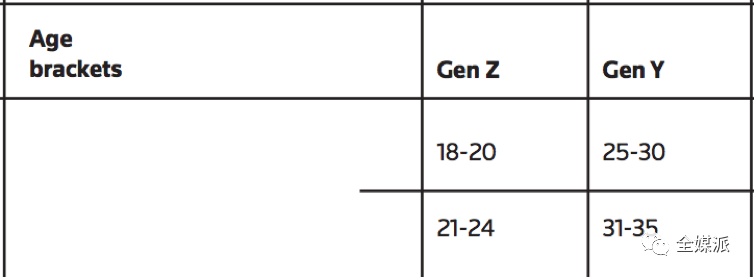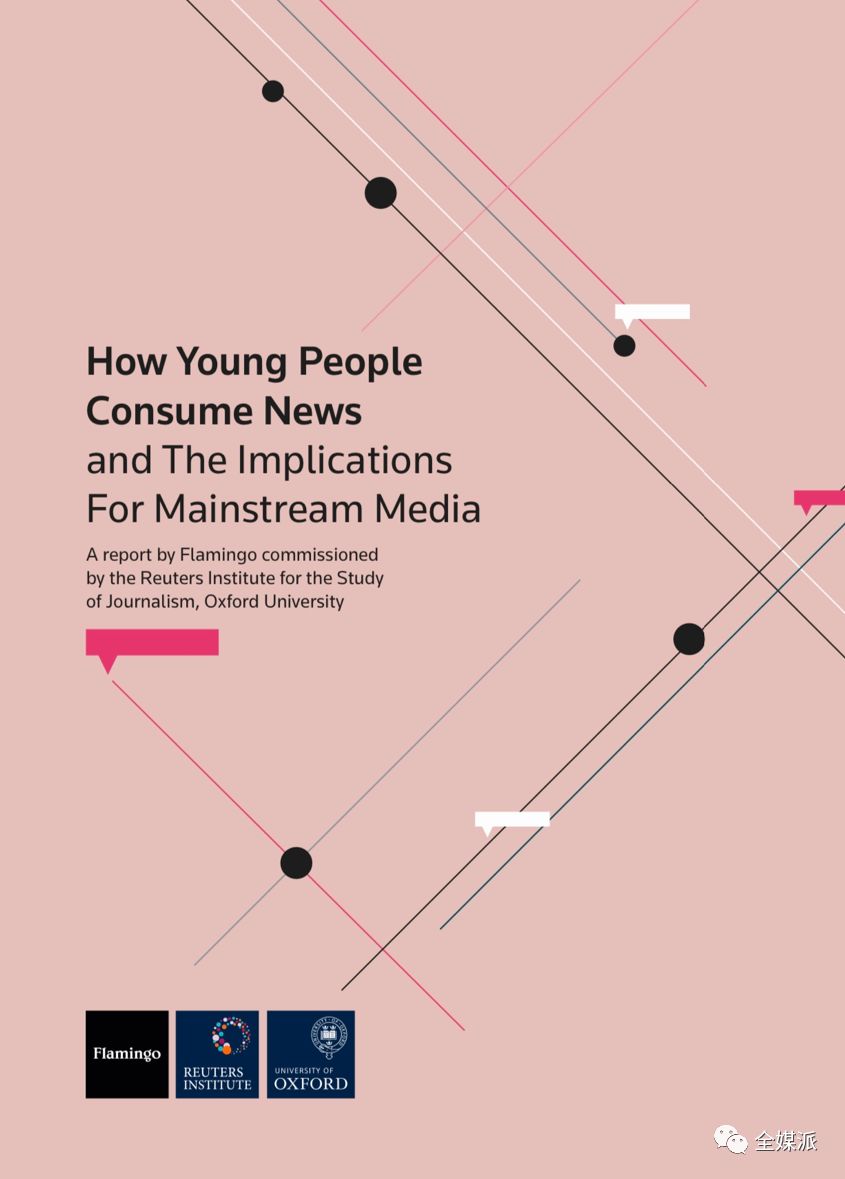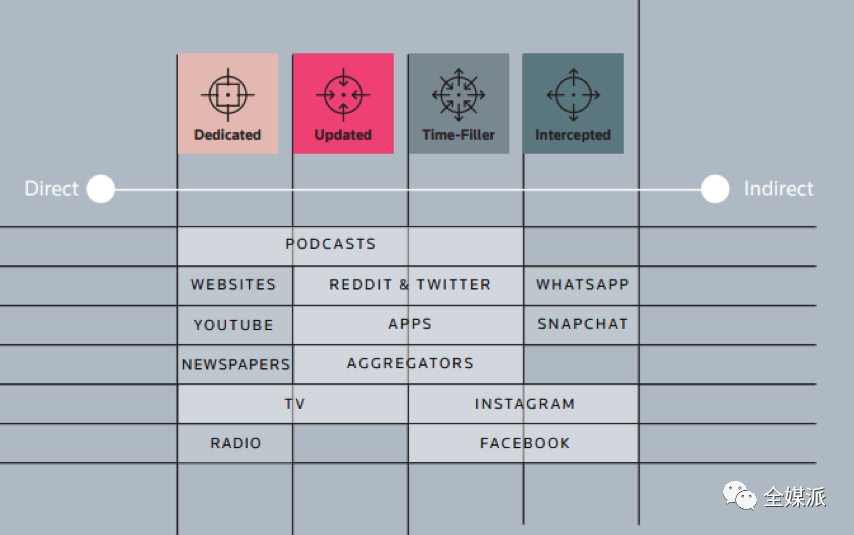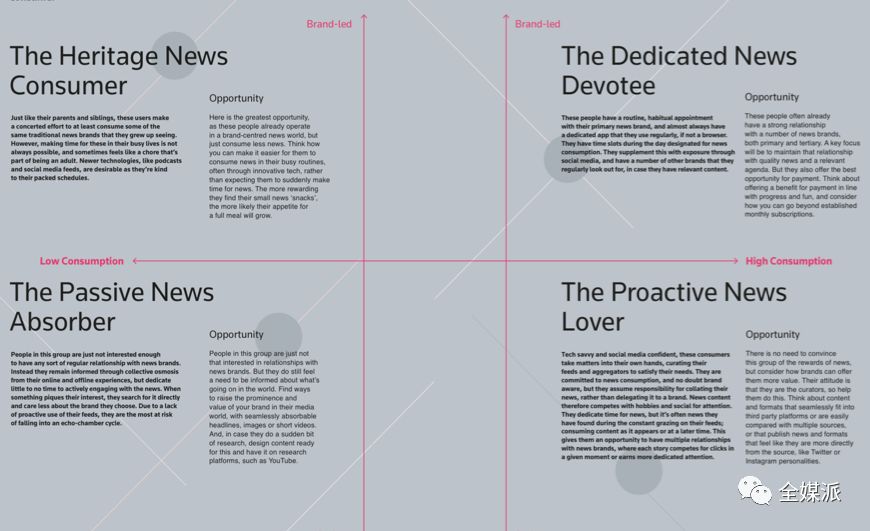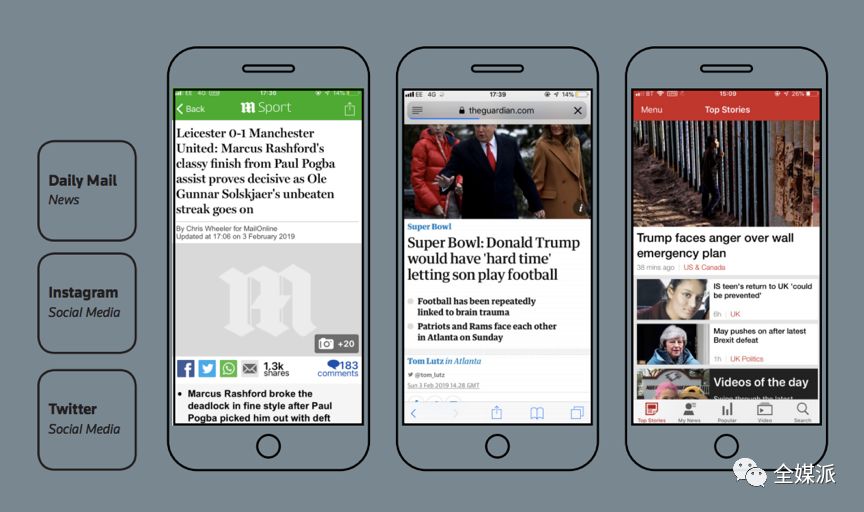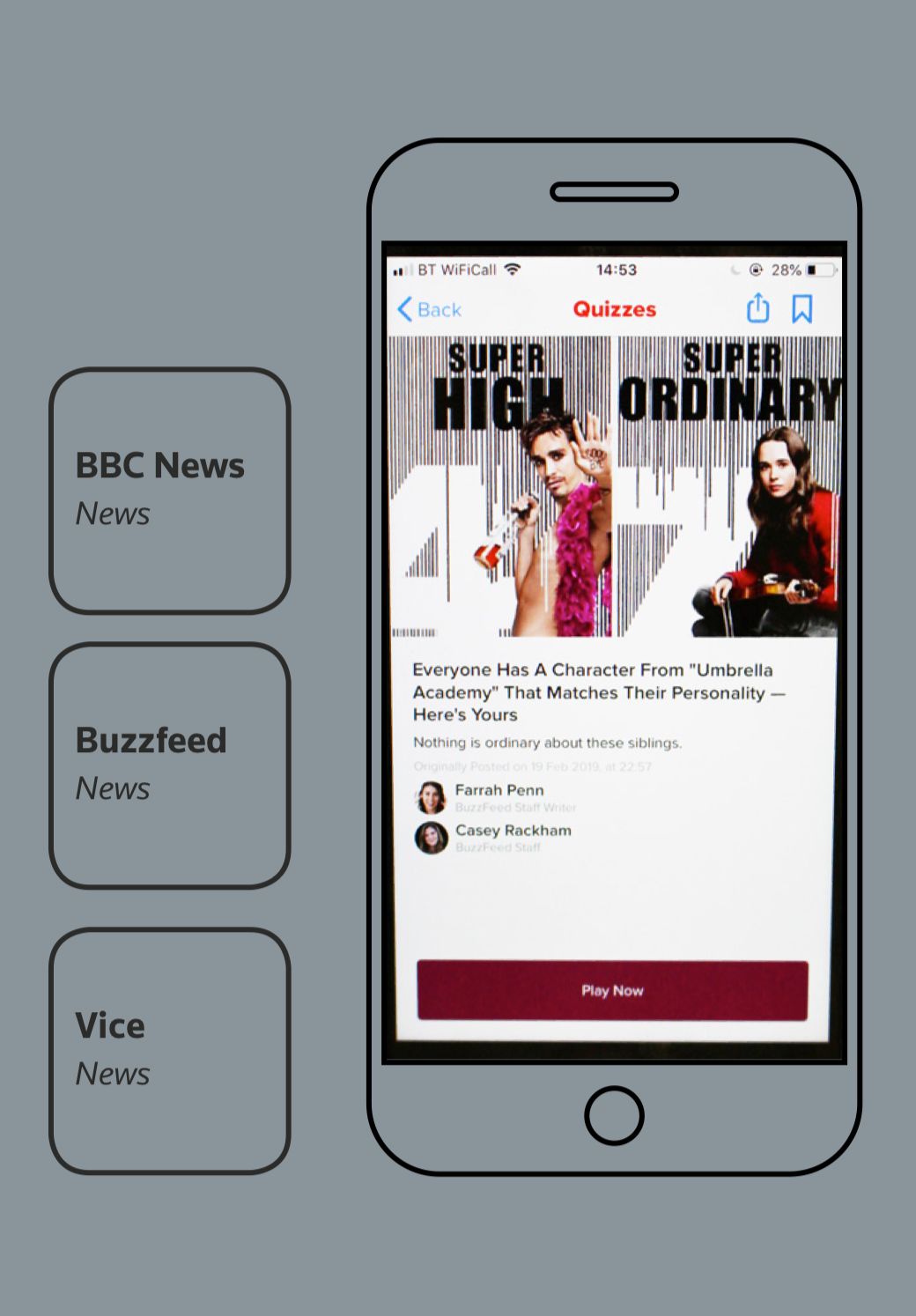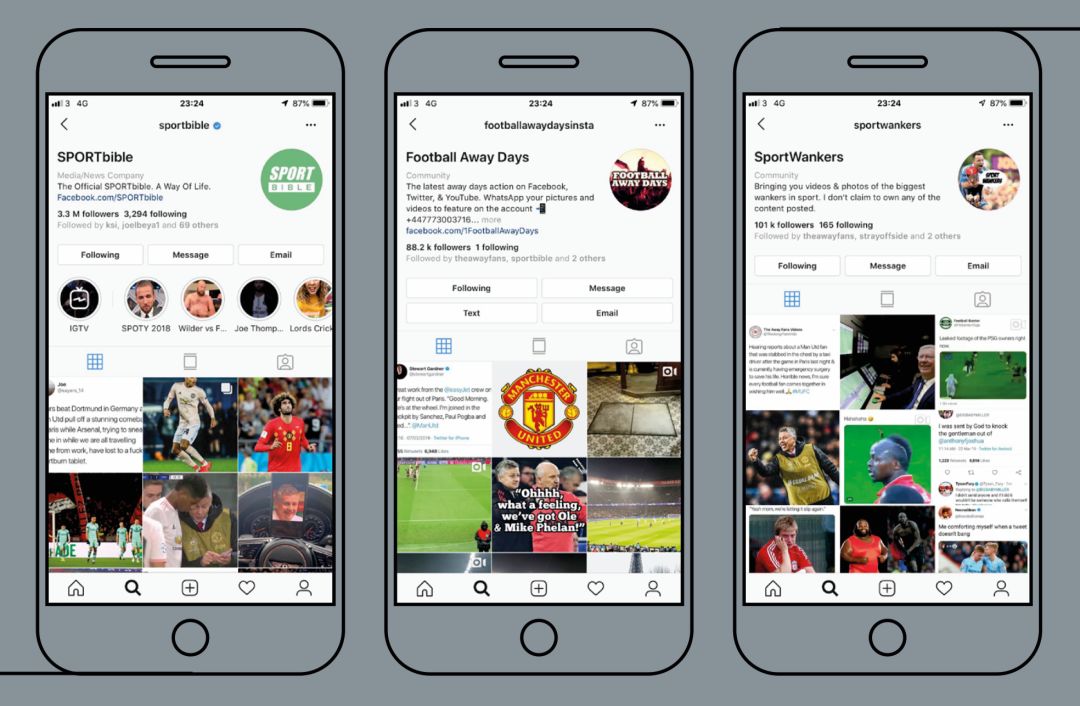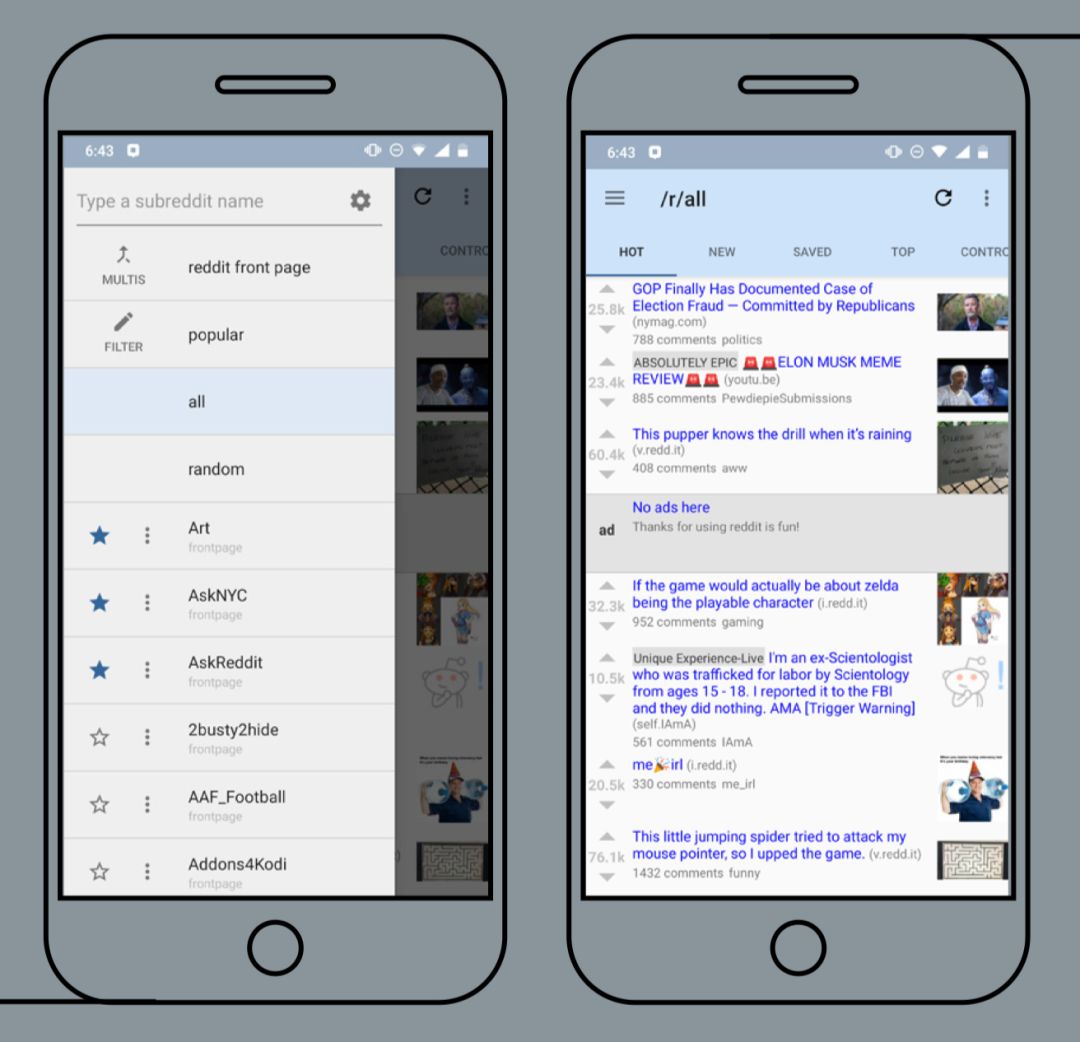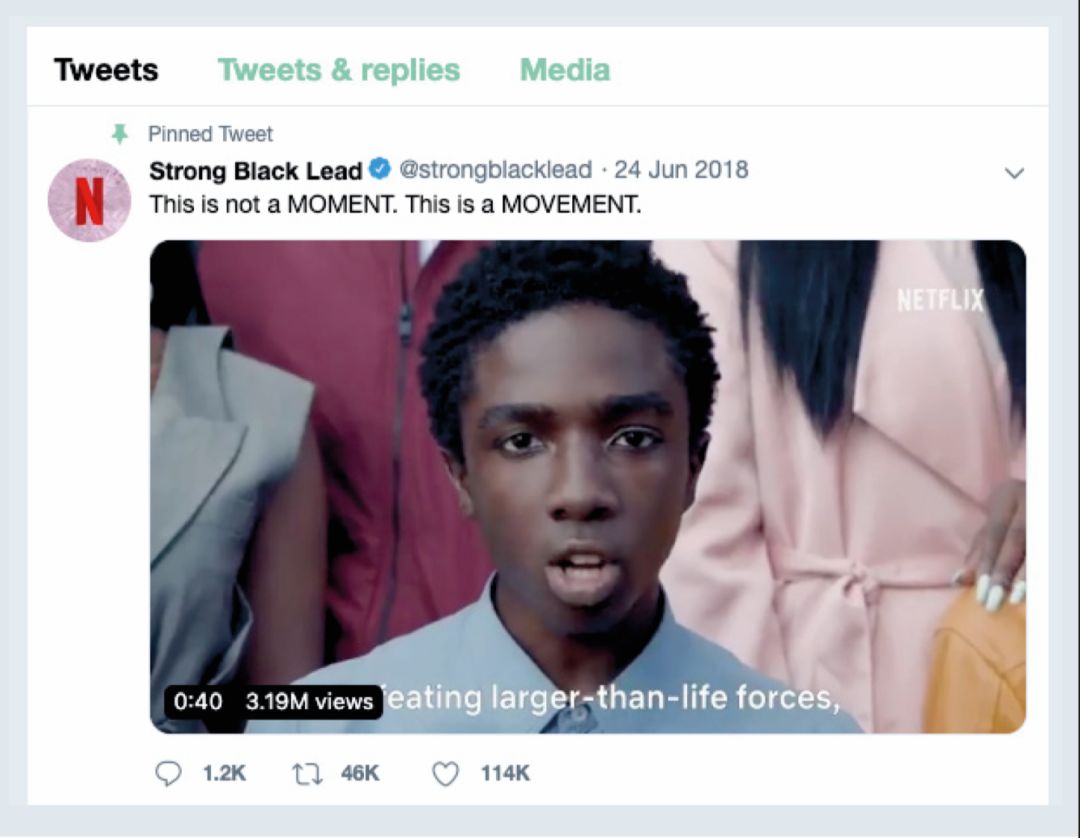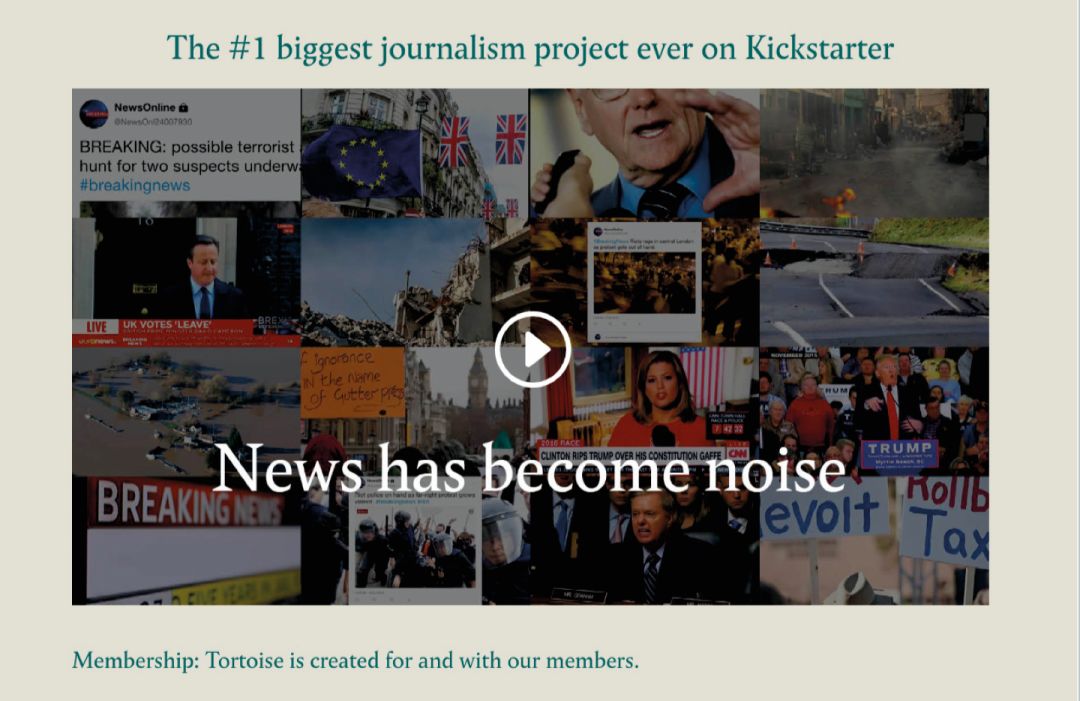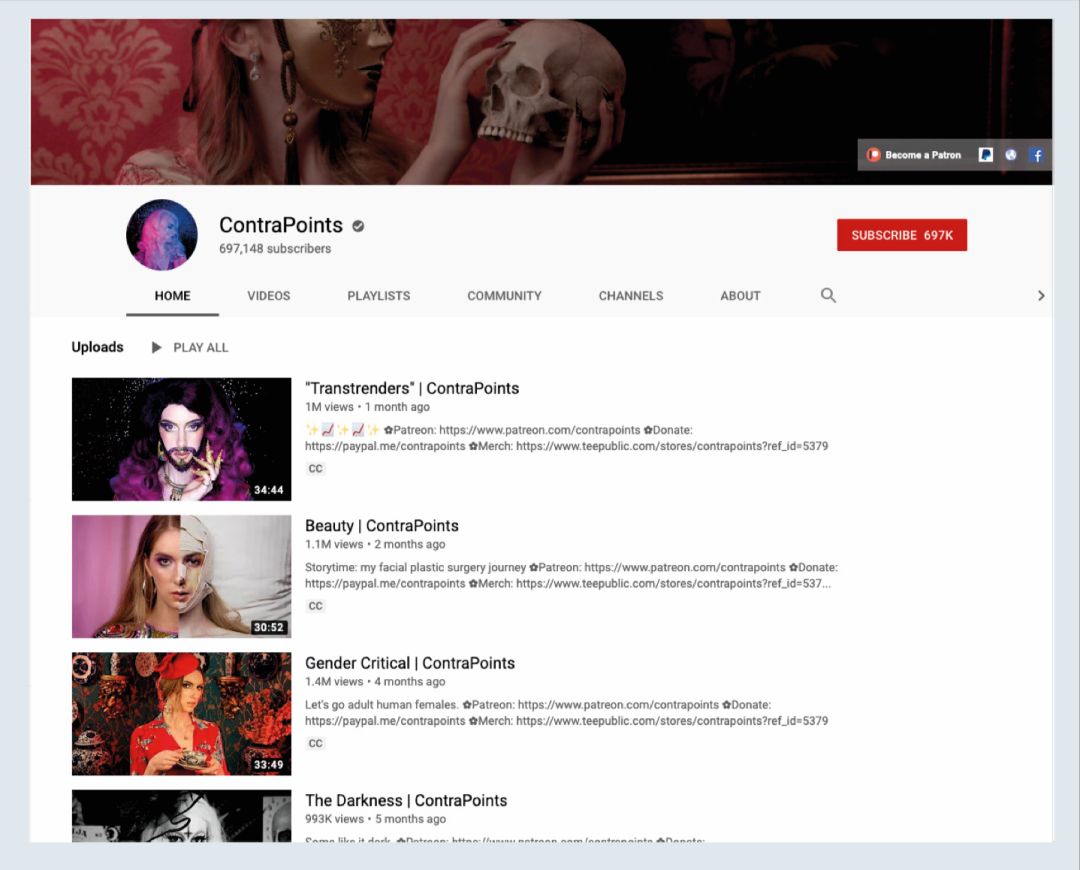Young people don’t like to read news, they don’t like to read the news you produce.
Editor’s note: This article is from WeChat public account “All Media” (ID: Quanmeipai), author of Tencent Media.
Traditional media racks their brains to provide good content for young people, but the effect seems to be less than ideal. Young people have their own ideas and have different needs for content, form and platform.
The Oxford Reuters Research Institute commissioned consulting firm Flamingo to conduct in-depth research on young people in the UK and the United States and found that young people’s information consumption habits are out of line with traditional media production methods. Based on this, the report gives targeted advice to traditional media. . The current media (id:quanmeipai) will compile this report, hoping to inspire you.
A quick overview of user insights
1. The duration of social media usage is dominant. There is no news app in the Top 25 app.
2, information consumer groups can be divided into four categories
Focused news users: deep users of news apps, with fixed reading habits;
Traditional news consumers: habitually reading some traditional media, but time is limited;
Passive news consumers: not interested in media brands, getting news offline in online and offline life;
Active News Consumers: Build your own information stream and discover news by refreshing.
3, 4 key information consumption motives
Dedicated: Read news in depth like a novel and a TV series;
Event Update Read (Updated): Efficiently get updates with newsletters and synopsis;
Time-Filler: In addition to news, you can watch entertainment and kill content;
Intercepted: Get through the pop-ups of news apps, news aggregators, and social media.
4, young people think that traditional media is negative, frustrating, headline news topics are narrow and repetitive, They want to get comprehensive and attractive content .
5, young people like content with international perspective,I hope news topics are more inclusive,diversification.
6. News reading often makes young people feel trivial and tired.
Reading tips
The Reuters report originally divided the intergenerationalities studied as follows:
· Generation Z:
In 2019, people aged 18-24 were divided into two groups (18-20 years old;
21-24 years old).
· Generation Y (also known as Millennials):
In 2019, the age group of 25-35 years old divided them into two groups (25-30 years old). ;
31-35 years old).
The above intergenerational division is not unique.
According to the Pew Research Center in the United States, the following divisions are often used in the academic community:
Y generation, born in 1981-1996, 23-38 years old in 2019;
Z generation, born in 1997-2012, 7-22 years old in 2019.
Research object:
10 English and American young people aged 18-35
Research duration:
2 weeks
Research methods:
Track the use of mobile apps by respondents within 2 weeks, ask them to write offline news consumption logs, conduct 90-minute interviews and 60-minute three-person conversations
What is the news in the eyes of young users?
To study the information consumption preferences of young users, you must first understand young people.
For the news media, young people pay the most attention to two points, one is progress – whether it can bring self-improvement and get rid of stereotypes;
The second is to enjoy – whether you can get satisfaction and do something you like.
There are also subtle differences between generations. The report refers to the millennial generation as “digital immigrants” and the Z generation as “digital aborigines”.
Z Generation is perfect, seamless, and personalized compared to millennialsThe experience is more demanding, convenience and instant gratification are key;
In addition, compared to the experience-centered millennials, the Z generation is more practical and more hopeful to know from the news:
What does this matter have to do with me?
What benefits does it have for me?
The biggest gap between the media and younger users is that the former wants to present “our world” and the younger focus on “my world” For the media, finding the intersection of the two worlds is the key to impressing young people.
The report draws the factors that influence progress, enjoyment, and the intersection between “we” and “me”.
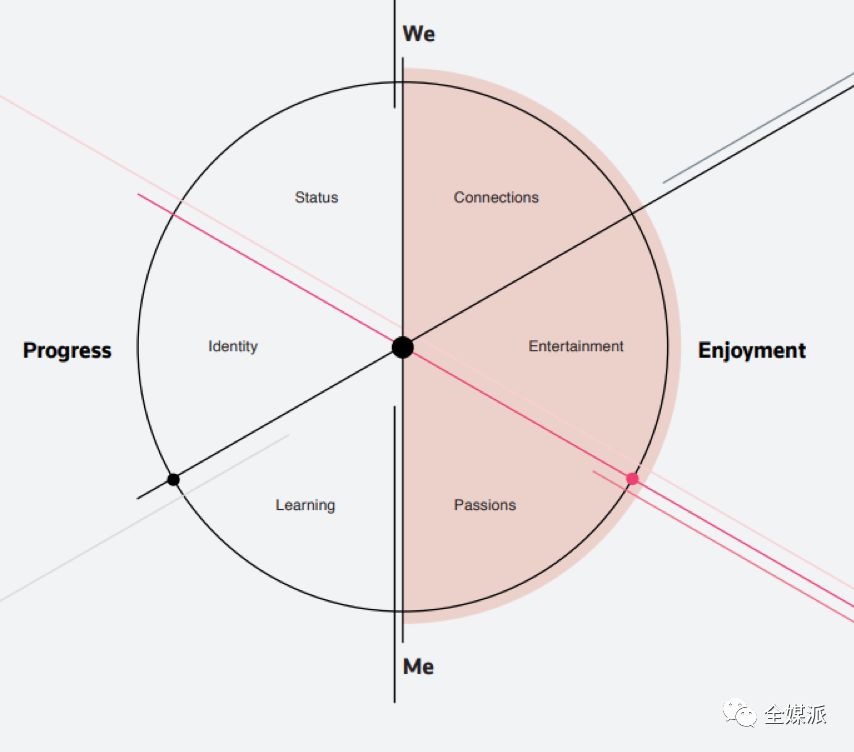
The irreparable gap lies in the fact that traditional media conveys “news that you should pay attention to”. What young users want, besides “should be concerned,” is useful, interesting and entertaining. of.
Information spending habits of young people:
Love social media
How to spend on young people
Sort by direct, direct (direct) to indirect (indirect), in order:
Dedicated
:
It does not happen often.
Intensively chasing news like chasing novels and TV shows, usually at night and on weekends, usually for introspection, deepening and expanding insights.
Focus on analysis, meticulous perspectives, and powerful narratives.
Event Update Read (Updated)
:
Efficiently get updates with newsletters and syllabuses, usually in the morning, to prepare for the start of the day.
HeadIt is usually self-considered that there is a need to know about the progress of the situation.
Focus on saving time and information extraction.
Time-Filler when playing
:
In addition to the news, I also watch entertainment and funny content.
Users generally use third-party platforms or do other things in reality while reading killing content.
Usually throughout the day, regardless of time and place.
Its value lies in the fact that news that is readily available can seamlessly capture individual attention;
Focus on entertainment, curiosity, timeliness, and platform fit and smooth consumer experience.
Intercepted
:
Get notified via pop-up notifications for news apps, news aggregators, and social media.
It can happen at any time.
This is passively received information, the value of which is to generate collective or personal resonance.
Like platforms and media
Young people often use a lot of platforms and media to get news, and these channels have their own roles and comparative advantages.
Together they form a news ecosystem that runs through four reading styles.
Because of the composite media environment, young people are looking for a platform that can seamlessly access information.
Unsurprisingly, social media is therefore dominant in young people’s mobile phones,Young people can get entertainment, information and socializing on the same platform.
Favorite App:Social Media is Absolutely
Regardless of the installed capacity or the length of use, in our statistics, the news app has a secondary position.
Below are the apps and categories we have listed, based on the average daily usage time of the app (incorporated when the app appears on the respondent’s phone).
The number in the upper left corner indicates the number of respondents who installed the app (the total number of respondents is 20).
All respondents have Instagram installed on their phones, and it has the longest usage time.
In the top 25 apps used by respondents, there was no news app other than Reddit.
Such an app, if any, represents a relatively small amount of daily use.
Social media has an almost unparalleled Relevance because it gives a strong sense of directness.
It gives you a unique experience to control or create your own news experience.
It provides a range of perspectives from amateur to professional, giving you direct access to news.
On social media, news is often integrated into a broader entertainment environment and personal life.
This is the convenience of social media.
However, given the concerns of digital health, privacy, etc., young people are also rethinking the use of social media, and the role played by different platforms :
· Facebook has “out of favor” and has become a group tool;
· Instagram has replaced the former to a certain extent, but it is not a natural environment for watching news;
· Twitter and Reddit are news aggregators and are also suitable for individual producers.
Four types of information consumer groups
The report divides four types of news consumers through comprehensive analysis such as tracking, digital journaling, and ethnography.
There are two axes in this division, which are:
1, to what extent does the news brand play a role in shaping the personal news experience (from personal orientation to brand orientation);
2, the extent to which individuals participate in news (from low consumption to high consumption).
The two axes are combined into a plane rectangular coordinate system. The report divides the information consumer groups into four categories, namely:
High consumer willingness + brand orientation→Professional news users (top right);
Low consumer willingness + brand orientation→traditional news consumers (top left);
Low consumer willingness + self-directed → passive news consumers (bottom left);/span>
High consumer willingness + self-directed → positive news enthusiasts (bottom right).
The characteristics of these four categories Can be summarized as:
Focused news users:
Deep user of news app, with fixed reading habits;
Traditional News Consumers:
Habitually reading some traditional media, but time is limited;
Passive News Consumers:
Not interested in media brands, getting news offline in online and offline life;
Active News Consumers:
Build your own information stream and discover news by refreshing.
Focused news users
This type of user has the habit of reading a news brand and has a frequently used app (if not a browser).
They arranged a part of the day to read the news during the day.
In addition, social media content serves as an aid and regularly follows other news sources to prevent missed important news.
The characteristics of this part of the user are:
The most engaged users of the news media app;
Invest in the established reading arrangements;
firmly believe in the value of news.
such as the British boy Edward ( Age range 21-24 years old, look at the “Daily Mail” App every morning and evening, also read the digital version of the “Guardian”, generally read the sports version, but did not install its app.
Use Instagram to entertain, update news with Twitter, and follow the Guardian and Daily Mail accounts.
He will use the Daily Mail to smash the time of the day, but the way to pass the time is now being replaced by podcasts, Twitter and Instagram.
If you can calm downAfter reading some articles, Joe’s top choices are The Guardian and The Sun, followed by The Daily Mail.
Media Opportunity:
This part of the user has a strong connection with the media brand.
The media should retain this user with quality and relevance, and can also consider paying for it
In order to provide users with a sense of progress and fun based on the added value, you can also explore new forms beyond the monthly subscription system.
Traditional News Consumers
These users, like their parents and siblings, use at least traditional media that have been in contact since childhood, but they don’t always have time to read the news, and news reading is more like a part of adult life. Just like the chores of household chores.
They prefer to consume content that relies on new technologies, such as podcasts and social media streams, which are friendly to a compact personal schedule.
This part of the user is characterized by:
The level of news participation is low, but if you touch, it is generally through a news brand;
They think they are very busy and have less time to focus on reading;
Because of the educational background, they still believe in the value of news.
For example, British girl Ellie (age range 18-20 years old), mobile phone with BBC, BuzzFeed and VICE, she hopes the value of the media It’s fast, accurate, and quick to navigate without deep understanding.
She still spends most of her time on Snapchat and Instagram.
Media Opportunity:
For the media, this group is the most likely to get users.
This part of the user has already consumed in the news world centered on the news brand, but the schedule is busy, resulting in less news time.
The media can start from here, use technology to develop more convenient content and forms, and rob users of time, rather than periodI hope they will make a lot of time to see the news.
When they find that the fragmented news “small snacks” are valuable, the more likely they are to increase their appetite.
Passive News Consumers
Consumers in this category are not interested in news brands and don’t build any regular relationships with them.
They generally get scattered news from online and offline life, and they are interested in actively searching, but they don’t care much about what kind of news brand to choose.
Because they are not actively using the information stream, they can easily fall into the “Echo Room” trap.
The characteristics of this part of the user are:
There is the lowest level of journalism among the four groups;
questioning the authority of traditional media and its ability to provide unbiased information.
For example, the British boy Joe (age range 18-20 years old) is quite uninterested in news and international events, usually based on interest and For entertainment purposes, get new information from friends or social media.
Play mobile phone about 4 hours a day, 70% of which is spent on Snapchat and Instagram.
Media Opportunity:
Passive usersNot just interested in news brands, but have the need to get information.
Try to improve the status and value of media brands in their content world, using immersive titles, pictures and short videos.
Design content for their search behavior on a specific platform, such as YouTube.
Active News Consumers
These users master the technology and have confidence in social media.
They will do it themselves, build their own information flow and news aggregators to meet their needs.
They take news consumption seriously, and there is no doubt brand awareness, but they will sponsor the integration of news instead of appointing it to a brand.
In the process,News content andHobbies and social content compete for attention.
They do invest in time to read the news,but often find news when they are constantly scanning the stream, consuming it when the news appears.
This part of the user has the opportunity to connect with a variety of news brands, but in this relationship, each news is competing for click-through rate and attention in a specific situation.
The characteristics of this part of the user are:
High participation in news, but also according to their own circumstances;
Reading news around the clock, mainly by refreshing behavior and killing time;
Keep doubts about the strengths of traditional news;
Keep an open mind on other news sources.
For example, American male Mark (age range 31-35 years old), daily habit of reading traditional media, but he thinks traditional media Reports are often one-dimensional.
In order to prevent missed major news, we will build our own information flow through social platforms and favorite pages to build a balanced understanding of the world.
Reddit is its main website for news, and it can read a lot without losing the integrity of the news;
Twitter can keep abreast of the latest developments of news producers and related parties in real time;
Podcasts will also be used to replace some of the long readings, and sometimes long articles will be kept for later.
Media Opportunity:
There is no need to forcefully persuade such users that “news will pay off,” but the media needs to think about how to bring more value to them.
Because they are the information flow builders themselves, so do a seamless adaptation of the content on a third-party platform – or help them filter information from massive sources or help them reach sources such as Twitter or Instagram Big V.
Seven industry insights
One of the main assumptions behind this report is that young people don’t care much about news, especially the producers of traditional news.
According to the research, we draw sevenIndustry Insights:
1. Relevance of news agendas to younger users
Generalized content may have a higher relevance, but current content topics are narrower and more repetitive.
Especially in recent years, there is often endless coverage of the same topic.
For example, the topic of “Brexit” has been discussed for a period of one year, often occupying the position of the front page, but there is no more substantial progress.
Young people have more international perspectives and diverse tastes. They often find that international reports often have a national perspective rather than being faithful to the local perspective.
Young people also care about a wider range of topics, such as art, culture, activism, environmental protection and LGBTQ. Although such content exists, they hope that mainstream news brands will be more diverse and more inclusive.
2. News and negative expression
As expected, young people do tend to think that news is negative, but things are not just that simple.
For the negative energy content, some media adhere to the attitude of objective reporting, but for young people, they still vaguely feel that the news is exaggerating the negative impact.
Negative is reflected in many ways:
In the topic of violence, crime, and hate speech, there are no positive measures to deal with;
No objective reporting of certain political and celebrities;
Preference for specific groups such as middle-class white males;
Make extremes in a name that is balanced and unbiased.
3, in the news Position: Interpretation of real views and politicization
Young people often think that fair and just news is an unattainable ideal.
For social events, young people want to explore and form their own opinions, rather than the interpretation given by the media. They want to see real and objective opinions, which are easily touched by facts and real individual stories.
4, the tone of the news and the taste of young people
Generally speaking, the tonality of the media is either too serious and boring, or too net-minded and eye-catching. Sometimes well-known news brands do not hesitate to use the title party to get clicks.It is difficult for the media to find a balance between the two extremes, but young people will be impressed by humanistic care and stories, non-serious but sincere expressions, and comedy and entertainment.
5. Adaptation of news in social media
News sometimes don’t fit into certain situations, especially on social media.
A news release on social media often does not take into account platform aesthetics and user habits, so it cannot attract attention;
Or, the purpose of publishing news is purely for drainage, allowing users to leave the platform and jump to the official website of the news.
Users use social media often for a seamless experience, and the outdated strategies of the news media often fail.
6. Trust
Fake news is not a problem, but it is annoying.
This is an opportunity for quality media.
In the interview, we did not feel the crisis of trust in the media for young people.
At a time when the fake news problem is being rendered very serious, young people think they have the ability to deal with such problems.
They will be conscious of increasing their own sources of information, avoiding being misled by algorithms, or circumventing the politicization and false output of certain brands of unknown origin. Therefore, quality media is the guarantee of news credibility, and young people may be more dependent. A traditional, “reputable” news brand.
To some extent, the old news media provides a way to verify fake news.
7, information overload < /strong>
At present, information reading is more like redundant chores and cannot generate active reading intentions.
In this regard, users have their own way to reduce information noise (for example, using information aggregators, social media, or digital fasting, or even not watching news at all).
The information is difficult to understand, not attractive enough, the experience is not smooth enough to lead to lower expectations, etc., all of which are the reasons why news brings negative impressions.
Five suggestions for the media
1. Improve the convenience and legibility of content consumption
Readers often get dissatisfied with complex, time-lined reports.
The media should dismantle complex issues and make them easy to understand.
For example, the BBC regularly updates the “Brexit” column – the Brexit Guide:
About Brexit, everything you need to know.”
This column is a common problem in the Brexit process (eg:
Can the UK cancel the Brexit?
Provide answers and provide interactive interpretation of terminology.
This column is designed to allow readers to quickly browse through the content of interest or to delve into relevant policy documents.

1) How to simplify complex problems with fragmented forms?
2) How to reduce the burden and triviality of information?
3) How to ensure that the user experience is improved with illustrations and animations?
4) How can I help users find and browse long content more easily in a limited time?
5) How do mainstream media improve their authority in complex events?
6) How to ensure that innovations do not complicate the information experience?
7) How to ensure that long-term event reports with complex background information allow users to follow up?
8) How to use technology to personalize content?
2. Enhance the use of third-party platforms
Distribution on third-party platforms such as Twitter, Instagram, etc., not only allows users to perceive the branding of the media, but also can not be biased by the title party style of the social platform, creating content that matches the platform temperament. .
For example, Netflix’s Twitter account uses a short video that plays automatically to attract users to discuss new episodes spontaneously, allowing users to brush Netflix like a normal Twitter account.
Media Thinking Questions:
1) How do you make a report in a way that is compatible with a third party, rather than forcing a report into a third-party platform?
2) Can the same story be split according to different platform characteristics?
3) How do I distinguish photographic images on Instagram from traditional photo photography?
4) How do you make users feel that they are getting real content instead of an ad?
5) How to enhance the user’s platform experience through content?
6) How to pass the sign style of media on different platforms?
7) How to improve the user’s demand for quality sources?
3. Cultivate user habits
For news brands, the decline of traditional reading habits is a major challenge.
Try to preserve the traditional habits of consumer spending, and create new consumer scenarios to form usage habits,
Such as commuting to read.
For example, The Economist launches the short news AppEspresso, which is a short news that can be read on 3 screens, usually ending with an interesting quote, like a “snack” that can be eaten on the road. “.
Media Thinking Questions:
1) How to create a focused information reading scene in a busy and fragmented environment?
2) How to make content and formCan you match the short reading time?
3) What can the “notification” do to stimulate the user’s desire to use?
4) How can I create a personalized and relevant content experience like Facebook and Netflix?
5) How do you create interactive habits on third-party platforms?
6) How to become an irreplaceable source of news follow-up?
7) How to mine different needs from the difference in user time?
8) Think about what the “customs” that different readers think is.
4. Improve relevance to users
Users tend to think that news is far away from me and has nothing to do with me. Therefore, the media needs to strengthen contact with readers through content and form.
User-enabled news app Citizen is popular among New York users, one of which is to remind them of crimes and emergencies in the neighborhood.
In the app, uploaded videos uploaded by ordinary users were later used in mainstream news reports, which enhanced the user’s sense of participation.
Media Thinking Questions:
1) How to expand the topic without losing the original user?
2) How to make users feel involved?
3) How to remind users of their stakes in the event?
4) How to combine content authority with UGC content?
5) How do you make ordinary users feel “grounded” in international reports?
6) How to motivate young users to discuss possible and positive actions for change?
7) How to play through innovative formsYoung people who demand “real”?
8) How to make the report more honest and humanized?
5. Diverse perspective presentation
In this interview, some users said that they hope that the media will give their thoughts and let users draw their own conclusions instead of forcing users to accept their own values.
In the operation of the media, there is no need to evade the expression of opinions, which can be expressed by presenting a multi-faceted view or by a more thoughtful review article.
For example, YouTube Transsexual Reds Cotrapoints discusses current affairs and politics in more than 20 minutes of video, and single-stage shows often attract millions of hits.
The blogger used exaggerated performances with sharp analysis. The point that fans appreciate is that in the contemporary Internet debate, Contrapoints did seriously think about the opposing views.
Media Thinking Questions:
1) How to make expressions more thoughtful and well-founded?
2) How to output opinions without distorting the facts and without being influenced by the tendency?
3) How do you interact with opposing views in a smart and fair way?
4) What role do you play in the hotspot?
5) How do you let users think about themselves while conveying content?
6) How do you show respect when you disagree?
Conclusion
The expansion of the Internet and social media platforms has had a huge impact. Young people are not without information consumption needs. Just the pattern of mobilization and fragmentation determines the change in reading style.
Younger and more personalized users have placed higher demands on the media.
In summary, there are the following conclusions:
1, information bodyThe test needs to be as easy as Facebook and Netflix
The content and form need to be innovative, the expression is more concise and clear, the content is more interesting, and the reader is more relevant.
Instant fragmented messages and recommendations can be more useful and relevant, and correct reporting tones can also affect user loyalty and trust.
2, the media brand needs to meet the expectations of users and create appropriate reading scenarios
The channel is characterized by mobile native and social platform, creating content that adapts to its own web page.
Considering that young people are addicted to mobile phones and will share and discuss with friends at any time, new forms of news need to be visual and flexible.
3, the reporting method needs to be changed
In addition to presenting objective events and maintaining a focus on serious topics, it is also necessary to trigger users’ desire to change the status quo, reducing stereotypes and agenda settings.
In addition, the report requires people’s culture, diverse perspectives, grounding, real and inclusive.
